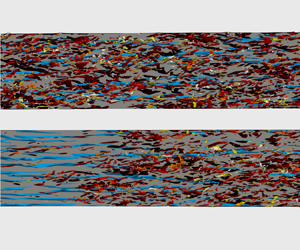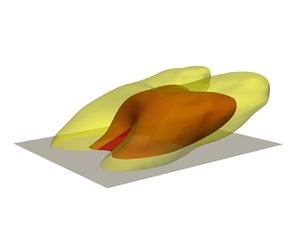Refine listing
Actions for selected content:
1417116 results in Open Access
Emma Moore, Socio-syntax: Exploring the social life of grammar. Cambridge: Cambridge University Press, 2024. Pp. 256. Hb. £95.
-
- Journal:
- Language in Society / Volume 53 / Issue 5 / November 2024
- Published online by Cambridge University Press:
- 16 April 2024, pp. 904-907
- Print publication:
- November 2024
-
- Article
- Export citation
Political Obligation and Self-Sufficiency in Leonardo Bruni's History of the Florentine People
-
- Journal:
- Austrian History Yearbook / Volume 55 / May 2024
- Published online by Cambridge University Press:
- 16 April 2024, pp. 552-564
- Print publication:
- May 2024
-
- Article
-
- You have access
- Open access
- HTML
- Export citation
HENDRIK L.E. VERHAGEN, SECURITY AND CREDIT IN ROMAN LAW: THE HISTORICAL EVOLUTION OF PIGNUS AND HYPOTHECA (Oxford Studies in Roman Society and Law). Oxford: Oxford University Press, 2022. Pp. viii + 434. isbn 9780199695836 (hbk). £90.00.
-
- Journal:
- The Journal of Roman Studies / Volume 114 / November 2024
- Published online by Cambridge University Press:
- 16 April 2024, pp. 260-261
- Print publication:
- November 2024
-
- Article
- Export citation
The authors’ reply to Jensen et al’s Letter to the Editor
-
- Journal:
- Infection Control & Hospital Epidemiology / Volume 45 / Issue 6 / June 2024
- Published online by Cambridge University Press:
- 16 April 2024, pp. 799-800
- Print publication:
- June 2024
-
- Article
-
- You have access
- HTML
- Export citation
Antithetic multilevel particle filters
- Part of
-
- Journal:
- Advances in Applied Probability / Volume 56 / Issue 4 / December 2024
- Published online by Cambridge University Press:
- 16 April 2024, pp. 1400-1439
- Print publication:
- December 2024
-
- Article
-
- You have access
- Open access
- HTML
- Export citation
Estudio preliminar e identificación de un campamento de náufragos en el contexto de la Guerra del Brasil (1825-1828), Partido de Patagones, Buenos Aires
-
- Journal:
- Latin American Antiquity / Volume 36 / Issue 1 / March 2025
- Published online by Cambridge University Press:
- 16 April 2024, pp. 202-221
- Print publication:
- March 2025
-
- Article
- Export citation
CAROLINE BERGEN, ‘WEGEN DER SCHÖNHEIT EURER HÄFEN …’ HAFENANLAGEN DER FRÜHEN KAISERZEIT – SPIEGEL STÄDTISCHER SELBSTDARSTELLUNG? (Pharos. Studien zur griechisch-römischen Antike 49). Rahden/Westf.: Verlag Marie Leidorf GmbH, 2022. Pp. 551, illus., maps, plans. isbn 9783867572774. €59.80.
-
- Journal:
- The Journal of Roman Studies / Volume 114 / November 2024
- Published online by Cambridge University Press:
- 16 April 2024, pp. 201-202
- Print publication:
- November 2024
-
- Article
- Export citation
An unusual form of “haemodynamic vise” in supra cardiac totally anomalous pulmonary venous drainage
-
- Journal:
- Cardiology in the Young / Volume 34 / Issue 5 / May 2024
- Published online by Cambridge University Press:
- 16 April 2024, pp. 1124-1125
-
- Article
- Export citation
Interplay of scales during the spatial evolution of energy-containing motions in wall-bounded turbulent flows
-
- Journal:
- Journal of Fluid Mechanics / Volume 985 / 25 April 2024
- Published online by Cambridge University Press:
- 16 April 2024, A6
-
- Article
-
- You have access
- Open access
- HTML
- Export citation
Crusade, Culture, and Conflict: The Evidence of Monastic Miscellanies
-
- Journal:
- Austrian History Yearbook / Volume 55 / May 2024
- Published online by Cambridge University Press:
- 16 April 2024, pp. 629-640
- Print publication:
- May 2024
-
- Article
-
- You have access
- Open access
- HTML
- Export citation
Reclaiming Anishinabe Law: Kinamaadiwin Inaakonigewin and the Treaty Right to Education Leo Baskatawang, Winnipeg: University of Manitoba Press, 2023, pp. 224
-
- Journal:
- Canadian Journal of Political Science/Revue canadienne de science politique / Volume 57 / Issue 2 / June 2024
- Published online by Cambridge University Press:
- 16 April 2024, pp. 489-491
-
- Article
- Export citation
Uniqueness and Hyers–Ulam’s stability for a fractional nonlinear partial integro-differential equation with variable coefficients and a mixed boundary condition
- Part of
-
- Journal:
- Canadian Journal of Mathematics / Volume 77 / Issue 4 / August 2025
- Published online by Cambridge University Press:
- 16 April 2024, pp. 1377-1397
- Print publication:
- August 2025
-
- Article
-
- You have access
- Open access
- HTML
- Export citation
Termitaria enhance soil and forest diversity in Deciduous Dipterocarp Forest, Northern Thailand
-
- Journal:
- Journal of Tropical Ecology / Volume 40 / 2024
- Published online by Cambridge University Press:
- 16 April 2024, e5
-
- Article
-
- You have access
- Open access
- HTML
- Export citation
ANOTHER COMPANION TO PLUTARCH - (F.B.) Titchener, (A.V.) Zadorojnyi (edd.) The Cambridge Companion to Plutarch. Pp. x + 502, ills. Cambridge: Cambridge University Press, 2023. Paper, £29.99, US$39.99 (Cased, £89.99, US$120). ISBN: 978-0-521-17656-9 (978-0-521-76622-7 hbk).
-
- Journal:
- The Classical Review / Volume 74 / Issue 2 / October 2024
- Published online by Cambridge University Press:
- 16 April 2024, pp. 438-440
- Print publication:
- October 2024
-
- Article
- Export citation
Social protection as a nutrition-sensitive instrument to address malnutrition in sub-Saharan Africa: Examining the utility of the UNICEF conceptual model of care for maternal and child nutrition
-
- Journal:
- Journal of International and Comparative Social Policy / Volume 39 / Issue 3 / November 2023
- Published online by Cambridge University Press:
- 16 April 2024, pp. 295-305
-
- Article
-
- You have access
- Open access
- HTML
- Export citation
MARKUS SACHS, BETRIEBSWIRTSCHAFTLICHES DENKEN UND HANDELN IM ANTIKEN ROM (Philippika: Marburger altertumskundliche Abhandlungen 161). Wiesbaden: Harrassowitz, 2022. Pp. ix + 343, illus. isbn 9783447118705 (hbk). €89.00 ; 9783447392921 (eBook).
-
- Journal:
- The Journal of Roman Studies / Volume 114 / November 2024
- Published online by Cambridge University Press:
- 16 April 2024, pp. 256-257
- Print publication:
- November 2024
-
- Article
- Export citation
The melanin pigment gene black mediates body pigmentation and courtship behaviour in the German cockroach Blattella germanica
-
- Journal:
- Bulletin of Entomological Research / Volume 114 / Issue 2 / April 2024
- Published online by Cambridge University Press:
- 16 April 2024, pp. 271-280
-
- Article
- Export citation
Linear actions of $\mathbb {Z}/p\times \mathbb {Z}/p$
 on $S^{2n-1}\times S^{2n-1}$
on $S^{2n-1}\times S^{2n-1}$
- Part of
-
- Journal:
- Proceedings of the Royal Society of Edinburgh. Section A: Mathematics / Volume 154 / Issue 6 / December 2024
- Published online by Cambridge University Press:
- 16 April 2024, pp. 1699-1712
- Print publication:
- December 2024
-
- Article
- Export citation
The structure of turbulence in unsteady flow over urban canopies
-
- Journal:
- Journal of Fluid Mechanics / Volume 985 / 25 April 2024
- Published online by Cambridge University Press:
- 16 April 2024, A5
-
- Article
-
- You have access
- Open access
- HTML
- Export citation
Lusaka Call-to-Action 2022: A Call to Strengthen Public Health Emergency Operation Centers in Africa
-
- Journal:
- Disaster Medicine and Public Health Preparedness / Volume 18 / 2024
- Published online by Cambridge University Press:
- 16 April 2024, e72
-
- Article
-
- You have access
- Open access
- HTML
- Export citation

















